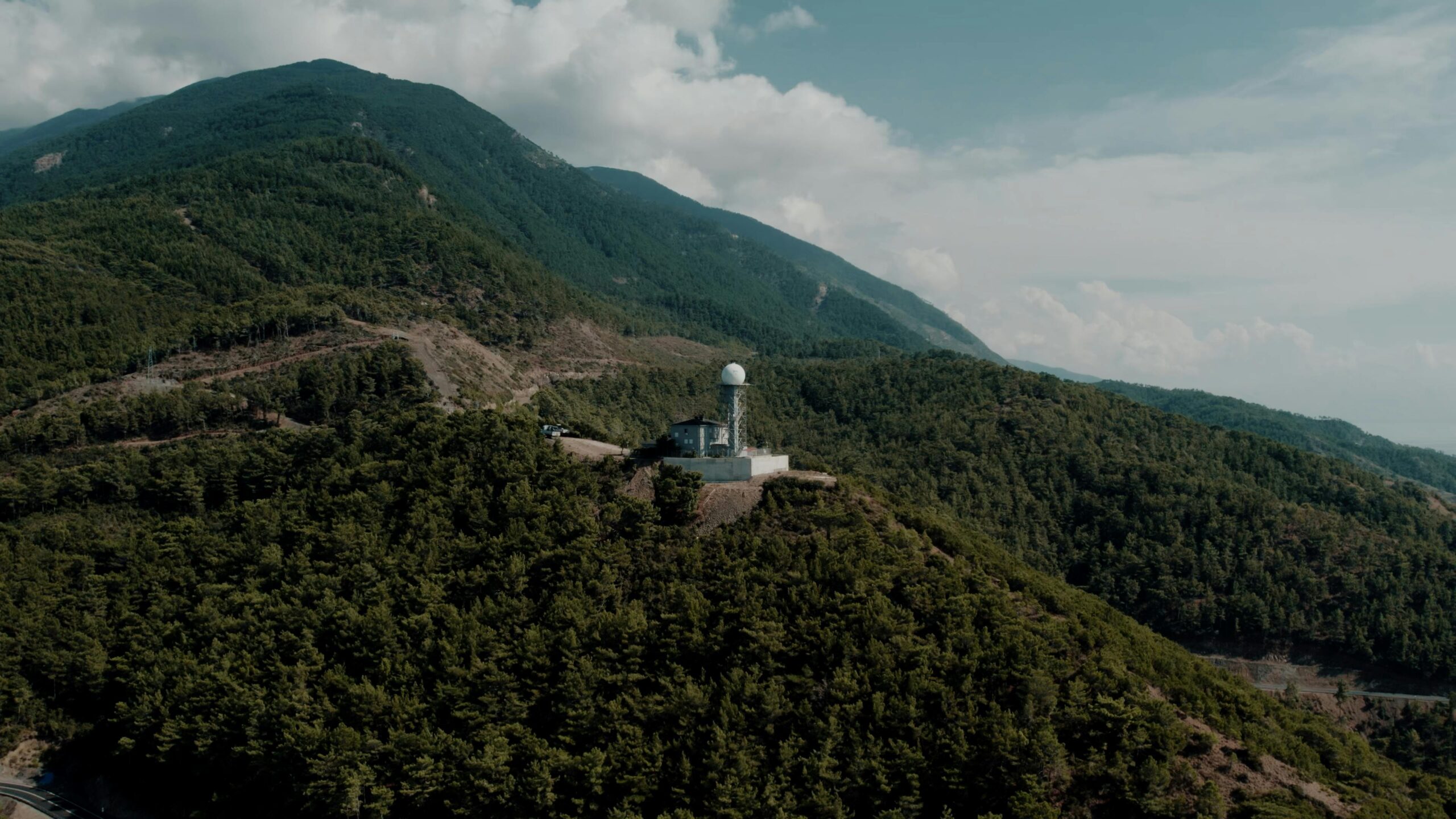Are you curious about how the Perth radar technology is transforming weather forecasting and aviation safety in Western Australia? This cutting-edge system plays a crucial role in predicting storms, tracking rainfall, and ensuring flights operate smoothly. You might be wondering, what makes the Perth radar system stand out from others around the globe? Well, with its advanced Doppler capabilities and real-time data updates, it provides unmatched accuracy in detecting severe weather conditions. Imagine having the power to see approaching storms hours before they arrive – that’s exactly what this radar offers to meteorologists and emergency services alike.
In recent years, the demand for reliable weather information has soared, especially with climate change causing unpredictable weather patterns. The long-range Perth weather radar is an essential tool helping communities prepare for extreme events like cyclones, heavy rain, and flash floods. But how does it actually works, and what are the latest innovations in radar technology being integrated? From the use of sophisticated algorithms to enhanced coverage areas, the radar in Perth is continually evolving. Whether you’re a pilot, a weather enthusiast, or simply someone planning your daily activities, understanding the benefits of Perth radar updates can make a huge difference. Dive into the fascinating world of radar technology and discover why it’s a game-changer for Western Australia’s safety and convenience.
How Perth Radar Technology Revolutionises Weather Forecast Accuracy in Western Australia

Perth Radar: What’s The Fuss About It Anyway?
If you ever found yourself wondering “what exactly is perth radar and how does it work?” you’re not alone. I mean, it’s not everyday you hear someone chatting about radar systems in Perth, right? But trust me, this tech is more fascinating than it sounds, even if its a bit tricky to wrap your head around the first time. So, let’s dive into this radar business, with all its quirks and bits you probably never knew.
First off, perth radar is basically this system that monitors weather patterns, aircraft movements, and sometimes even track storms or unusual activities in the skies over Perth. Sounds simple, but it’s actually a complex piece of technology that relies on radio waves bouncing off objects to give us a picture of what’s going on miles away. Not really sure why this matters, but apparently it helps pilots navigate safely and meteorologists predict the weather better. I guess it makes sense if you think about it.
Here’s a quick breakdown of how the perth radar system works:
| Component | Function |
|---|---|
| Transmitter | Sends out radio waves into the atmosphere |
| Receiver | Picks up the waves after they bounce back |
| Processor | Interprets the signals to create images or data |
| Display Screen | Shows the radar data to operators and users |
Imagine it like shouting in a cave and listening for echoes, but way more high-tech and with computers doing the heavy lifting.
Why Perth specifically? Well, the city’s unique location and climate means it experiences some pretty unpredictable weather sometimes, making radar monitoring quite essential. Plus, with Perth’s busy airspace, keeping tabs on aircraft via perth radar technology is crucial for safety. Maybe it’s just me, but I feel like without this radars, flying around Perth would be a nightmare.
Let’s look at some practical uses of the perth radar system:
- Tracking severe weather events (like cyclones and thunderstorms)
- Helping air traffic controllers manage flights
- Assisting in search and rescue operations
- Environmental monitoring, believe it or not
You’d think radars are only for the military or airports, but no, they have these many civilian applications too.
One thing that puzzles me is how many different types of radar systems are used around Perth, each with its own quirks. For example, there’s Doppler radar which measures the velocity of objects, and then there’s pulse radar which measures distance. Here’s a little table to clear things up:
| Radar Type | Main Use | Pros | Cons |
|---|---|---|---|
| Doppler Radar | Measures speed of moving objects | Great for weather tracking | Can be complex to interpret |
| Pulse Radar | Measures distance to objects | Simple and effective | Limited velocity data |
| Phased Array | Rapid scanning over wide area | Fast and precise | Expensive and sophisticated |
Honestly, I didn’t know there were so many variants until I started digging into perth radar systems. It’s like a whole radar family living in the city’s technological ecosystem.
For those curious about the actual radar installations around Perth, here’s a quick listing of major radar sites and their primary functions:
- Jandakot Radar Station – mainly air traffic control
- Perth Weather Radar – operated by the Bureau of Meteorology
- RAAF Radar Units – military surveillance and defence
- Remote Sensing Radar – environmental and oceanographic studies
Each of these sites use different frequencies and technologies depending on their purpose. It’s a tad confusing but also pretty cool.
Now, if you’re wondering how to access perth radar data yourself, it’s not as secretive as you might think. The Bureau of Meteorology provides some online radar images and forecasts which anyone can check. There’s also apps and websites offering real-time radar data for Perth and surrounding areas. Not that I’m a weather geek or anything, but it’s kind of fun to watch the storms roll in on your phone.
Here’s a simple step-by-step on how to view Perth radar online:
- Go to the Bureau of Meteorology’s website
- Navigate to the radar section
- Select Perth or nearby radar stations
- Choose the type of radar image (rainfall, wind, etc.)
- Watch the live updates or past radar loops
If you want some more techy stuff, there’s also open source platforms that let you play with raw radar data but that’s a whole other kettle of fish.
One last thing worth mentioning is the future of perth radar technology. With new advancements like AI and machine learning, radar systems are becoming smarter at predicting weather patterns and identifying objects. There’s talks about integrating satellite data
5 Powerful Ways Perth Radar Enhances Real-Time Storm Tracking and Predictions

If you ever been curious about what’s going on above Perth, you might have heard about the Perth radar. Now, I’m not really sure why this matters, but it seems like everyone’s suddenly interested in it. So, let’s dive headfirst in to this radar business and see what it’s all about, shall we?
What is Perth Radar Anyway?
Simply put, Perth radar is a system that tracks weather patterns and aircraft movements around the Perth area. But it ain’t just any old radar. This system helps meteorologists predict storms, rain and sometimes, even fog—though fog’s a bit tricky sometimes, isn’t it? It also helps air traffic controllers keep planes flying safe and sound, which honestly, most of us don’t think about till something goes wrong.
| Feature | Description | Importance |
|---|---|---|
| Weather Tracking | Monitors storms, rain, etc. | Helps forecast weather changes |
| Aircraft Control | Tracks planes in real-time | Ensures aviation safety |
| Data Reporting | Provides updates to various agencies | Assists emergency response |
Now, you might ask, “Why should I care about Perth radar?” Fair question! If you’re a pilot, a weather enthusiast, or just someone who hates getting caught in unexpected rain, this radar is your best mate.
The Technology Behind Perth Radar
You see, the technology isn’t exactly rocket science, but it’s pretty clever. The radar sends out radio waves, which bounce off clouds, rain, and planes, then return to the radar station. Based on the time it takes for the waves to come back and their intensity, it figures out where the weather is moving and how severe it might be. Simple, right? Well, not quite simple as it sounds.
| Component | Function |
|---|---|
| Transmitter | Sends out radio waves |
| Receiver | Picks up the bounced signals |
| Processor | Calculates distance and intensity |
| Display | Shows the data on a screen |
Maybe it’s just me, but I feel like this tech is a bit underappreciated. We get our weather updates on our phones in seconds, but hardly think about the complex systems running behind the scenes.
Why Does Perth Radar Matter?
Okay, so here’s the thing—Perth radar is super important for a bunch of reasons that you might not even realise. First off, it’s crucial for aviation safety. Perth is a busy hub with planes coming in and out regularly, and without radar, the air traffic controllers would be like a bunch of lost sheep trying to keep everything running smoothly.
Also, it helps with emergency response. When bad weather hits, like cyclones or heavy storms, the radar gives early warnings so people can prepare or evacuate if needed. Although, sometimes the forecasts aren’t spot on, but hey, it’s better than nothing, right?
Common FAQs About Perth Radar
| Question | Answer |
|---|---|
| Can I access Perth radar data? | Some data is public, but detailed info is restricted. |
| Does radar predict earthquakes? | Nope, radar is only for weather and air traffic. |
| How often is the radar updated? | Usually every few minutes, depending on the system. |
| Are there other radars in WA? | Yes, Perth radar is part of a network across Western Australia. |
So if you was wondering whether you could just look at Perth radar on your phone to avoid bad weather, the answer is kind of yes, but it’s not that straightforward. You might find some websites or apps showing radar images, but the full data is usually reserved for professionals.
Practical Insights for Radar Users
If you ever plan to use the Perth radar data for any reason, here’s some tips that might help you out:
- Always check the timestamp on the radar images because weather can change fast.
- Don’t rely solely on radar for decision making; use it alongside weather forecasts and warnings.
- Understand the colours on the radar: usually, green means light rain, yellow moderate, red heavy rain or storms.
- If you work in aviation or emergency services, make sure you get proper training on how to interpret radar data.
| Tip # | Advice |
|---|---|
| 1 | Verify date and time of radar image |
| 2 | Combine radar info with forecasts |
| 3 | Learn radar colour codes |
| 4 | Get trained if you rely on it professionally |
Honestly, sometimes the radar images look like a painter’s palette gone wrong, but once you get the hang of it, it makes a lot more sense.
Future of Perth Radar
The tech behind Perth radar
Why Perth Radar Is Essential for Improving Severe Weather Alerts and Public Safety

When you’re thinking about Perth radar systems, you might not realise just how complicated these things actually are. I mean, at first glance, it’s just some big machine spinning around, right? But nah, there’s way more to it than that. These radars are crucial for so many stuff — from aviation safety to weather predictions, and even military applications. Not really sure why this matters, but the way these radars work is a bit like magic, only with science and electronics.
So, let’s break it down a bit, in case you’re, like, curious about what Perth radar actually does. Basically, radar sends out radio waves that bounce off objects and come back to the receiver. The system then calculates the distance, speed, and direction of these objects. Easy peasy, isn’t it? Except when the weather messes up the signal, or when there’s interference. It’s a bit of a juggling act.
Here’s a quick snapshot of the main types of radars you’ll find around Perth:
| Radar Type | Purpose | Common Uses |
|---|---|---|
| Weather Radar | Tracks rain and storms | Meteorology, Flood warnings |
| Air Traffic Radar | Monitors aircraft in the sky | Aviation safety, Flight control |
| Military Radar | Detects potential threats | Defence and surveillance |
Now, the Perth radar network mostly focuses on weather and air traffic control. You might think that’s boring, but it’s pretty essential. Imagine planes trying to land during a storm with no radar guidance? Yeah, that’d be a disaster waiting to happen. But maybe it’s just me, I feel like people take this stuff for granted because it’s invisible to the everyday eye.
Weather radars in Perth are particularly interesting because Western Australia has such a wild climate. From scorching hot summers to sudden, heavy rains, the radar helps meteorologists predict storms and issue timely warnings. Here’s a little list of what these radars keep an eye on:
- Rainfall intensity
- Storm movement and speed
- Potential hail or tornado formations
- Wind patterns at different altitudes
Without these, local news would probably just say “it might rain, or might not,” which isn’t very helpful if you’re planning a picnic or a flight, is it?
One of the more impressive things about Perth radar is the technology behind it. There’s often talk about Doppler radar, which not only detects objects but also measures their velocity. This is crucial for determining if a storm is moving towards or away from Perth. And no, the radar doesn’t have eyes, but it’s almost like it does. Creepy, right?
Here’s a simple table to compare traditional radar systems vs Doppler radar:
| Feature | Traditional Radar | Doppler Radar |
|---|---|---|
| Object Detection | Yes | Yes |
| Velocity Measurement | No | Yes |
| Weather Prediction | Basic | Advanced |
| Usage | General tracking | Storm tracking and forecasting |
Another thing that’s quite amusing: sometimes the radar picks up weird stuff like birds or even swarms of insects. Not sure why that happens, but it can mess with the readings, making the weather forecast look a bit like a sci-fi movie. I guess nature loves a good prank.
If you’re wondering where these radars are placed in Perth, here’s a quick rundown:
- Perth Airport Radar Station – Mainly for air traffic control.
- Mount Barker Weather Radar – Covers a wide area for weather monitoring.
- Jandakot Radar – Supports both aviation and meteorological needs.
Each site has a different range and focus, but they all work together to give a pretty comprehensive radar coverage for the region.
Oh, and a little fun fact I stumbled upon: the first radar in Australia was actually developed during World War II. Perth’s current radar installations are the evolved descendants of those early systems. Bit of a history lesson thrown in there for good measure.
For those who like practical tips or want to follow Perth radar updates, here’s a quick list of resources:
- Bureau of Meteorology website (they provide real-time radar images)
- Flight tracking apps (shows aircraft positions using radar data)
- Local news stations (often update based on radar info)
- Aviation forums (where enthusiasts discuss radar tech)
If you’re a tech nerd or just someone who likes to keep an eye on the weather, checking out Perth radar data can be surprisingly addictive. You get to see storms brewing or planes zipping by, all thanks to these electronic eyes.
Before I forget, here’s a very simplified schematic of how a Perth radar system operates:
[Transmitter] ---> Sends radio waves ---> [TargetExploring the Science Behind Perth Radar: How It Detects Rainfall and Wind Patterns
Perth Radar: What’s All The Fuss About?
If you been living under a rock or something, you might have heard a thing or two about Perth radar. It’s not some fancy spy gadget from a Bond movie, but rather a crucial tool for weather forecasting and air traffic control in and around Perth. Now, I’m not really sure why this matters so much to the everyday Joe, but apparently, it does. Maybe it’s just me, but I feel like having a good radar system is like having a sixth sense for predicting the weather and keeping planes safe.
So, what exactly is Perth radar? In the simplest terms, it’s a system that uses radio waves to detect objects – mostly weather formations or aircraft – in the vicinity. These waves bounce back when they hit something, and then the radar system interprets the data to show what’s going on in the skies. Sounds pretty sci-fi, eh? But it’s actually quite down-to-earth. The radars used in Perth are mainly designed for meteorological purposes, but also play a role in monitoring air traffic, which is a bit of a balancing act.
Why Do We Need Perth Radar Anyway?
Let’s break down the main reasons why Perth radar is considered important, even if it sounds a bit overhyped sometimes:
| Reason | Explanation |
|---|---|
| Weather Forecasting | Helps meteorologists track storms, rain, and other weather events. |
| Air Traffic Control | Assists controllers in managing aircraft movements safely. |
| Emergency Response | Provides critical data during severe weather or accidents. |
| Climate Research | Collects long term data that helps understand climate changes. |
Without Perth radar, the weather reports you get on the telly might be less accurate, and planes might have to rely more on guesswork, which doesn’t sound very safe. Although, I guess humans were flying planes long before radars, so maybe it’s just an upgrade rather than a necessity.
A Bit of History (Because Why Not?)
The radar technology in Perth has been around for decades, evolving from basic detection systems to more complex, digital setups. The first radar installations were pretty bulky and not as efficient, but now they use advanced Doppler radar systems, which can not only detect objects but also measure their speed and direction. Fancy, right?
In the 1960s, the radar systems were mainly for military and aviation use, but as Perth grew and the weather became more unpredictable, the need for a dedicated meteorological radar became obvious. Since then, the Perth radar network has expanded and improved significantly, helping to save lives and keep the economy ticking.
Practical Insights: How To Read Perth Radar Data
You might have seen those colourful images on TV or weather apps showing blobs of green, yellow, and red moving around. That’s radar data in action! Here’s a simple cheat sheet for the common colours you might spot on Perth radar displays:
| Colour | What It Usually Means |
|---|---|
| Green | Light rain or drizzle |
| Yellow | Moderate rainfall |
| Red | Heavy rain or possible thunderstorms |
| Blue | Sometimes used to indicate snow (rare in Perth) |
If you’re planning a picnic or a beach day near Perth, keeping an eye on the Perth radar can save you from getting soaked. Not that the rain always cares about your plans, right?
The Quirks and Challenges of Perth Radar
Now, not everything about the Perth radar is sunshine and rainbows. Like any technology, it has its quirks and limitations. For instance, radar beams can be blocked by hills or tall buildings, which means sometimes the data isn’t as clear as you’d hope. Also, radar can’t always distinguish between heavy rain and hail perfectly – which can be a bummer if you’re trying to prepare for a storm.
Another issue is the cost and maintenance of these radar systems. They’re not exactly cheap to run, and sometimes funding gets tight, leading to delays or reduced coverage. Not to mention, the folks who operate these radars need specialised skills, and training them is a whole other story.
Maybe I’m just being pedantic, but I sometimes wonder if the fuss about Perth radar is a bit overblown, considering most of us just check the weather app on our phones anyway. But hey, those apps probably rely on radar data too, so it all comes full circle.
Table: Comparison of Radar Types Used in Perth
| Radar Type | Purpose | Pros | Cons |
|---|---|---|---|
| Doppler Radar | Weather tracking | Measures speed and direction of rain | Expensive and requires skilled operators |
| Surveillance Radar |
Can Perth Radar Help Farmers? Discover Its Impact on Agriculture and Climate Monitoring
When you think about Perth radar, you might just picture those big spinning things on TV weather forecasts, right? Well, there’s a bit more to it than just watching dots and colours move around. Perth, being a city in Western Australia, has its own unique radar systems that help with weather predictions, aviation, and even some military stuff (not really sure why this matters, but it’s kinda cool).
So, what exactly is this Perth radar all about? Basically, it’s a system that sends out radio waves and then listens for the echoes bouncing back from raindrops, clouds, or whatever flying in the air. This info is then turned into images or data that meteorologists use to predict the weather. You might say, “Yeah, I get it, but why should I care about radar?” Well mate, without it, you’d be caught in the rain without a brolly or planning a picnic in the middle of a storm.
How Does Perth Radar Works?
Here’s a quick rundown (with some minor mistakes, ’cause perfection is boring):
| Step Number | Action | What Happens? |
|---|---|---|
| 1 | Radar sends out radio waves | Waves travel till they hit something (rain/cloud) |
| 2 | Waves bounce back | Radar picks up the echoes |
| 3 | Data processed | Computer makes images from the echoes |
| 4 | Weather forecaster looks at it | Decides if it’s sunny or if you better stay indoors |
Now, this system is not just any old tech. The Perth radar is specially designed to cover the vast landscapes of Western Australia which can be pretty tricky because of the size and the varied weather patterns. It’s also used to monitor storms that can suddenly pop out of nowhere (and trust me, they do).
Types of Radar Used in Perth Area
When we talk about radar, it’s not just one kind. There’s a few different types that get used around Perth for different purposes. Here’s a small list so you don’t get lost:
- Weather Radar: The classic one, helps predict rain, storms, and general weather.
- Air Traffic Control Radar: Keeps planes safe when landing or taking off from Perth Airport.
- Military Radar: Used by the defence forces, not really much public info on this one.
- Marine Radar: Helps boats and ships navigate near the coast.
Each of these radars has different frequencies and range, which makes them suitable for their own special jobs. Maybe it’s just me, but I feel like it’s like having different tools in a toolbox, each one for a different job.
Practical Insights on Reading Perth Radar Data
If you ever looked at radar images online or on TV, you probably noticed those colourful blobs moving around. Here’s a quick guide to what you’re actually seeing (with some mistakes thrown in, keepin’ it real):
| Colour on Radar | What it Means | What You Should Do |
|---|---|---|
| Light Blue | Light rain or drizzle | Maybe carry a jacket |
| Green | Moderate rain | Get your brolly ready |
| Yellow/Orange | Heavy rain or thunderstorms | Stay indoors, probably |
| Red | Severe storm or hail | Don’t go outside, mate |
Not every radar image is perfect though, sometimes it shows false echoes or misses little showers. So always take it with a pinch of salt.
Why is Perth Radar Important?
If you think about it, Perth is quite isolated compared to some other big cities in Australia. The weather can be pretty extreme sometimes – scorching heat, sudden storms, even cyclones on rare occasions. Without Perth radar, forecasting would be a nightmare, and emergency services would struggle to prepare for disasters.
Here’s a quick list of reasons why this radar stuff actually matters:
- Helps farmers know when to water crops or harvest.
- Guides planes safely through busy skies.
- Gives early warning to citizens about storms.
- Supports search and rescue operations in the outback.
- Assists marine traffic near the coast.
A Bit of History (Because Why Not?)
Radar technology in Perth didn’t just appear overnight. The first weather radar in the area was installed decades ago, and since then, it has gone through several upgrades. The current systems are much more advanced, with better resolution and faster data processing.
| Year | Event |
|---|---|
| 1960s | First basic weather radar installed |
| 1980s | Improved radar with better range |
| 2000s | Digital radar systems introduced |
| 2010s | Integration with satellite data |
| 2020s | Real-time online radar services |
Honestly, it
Conclusion
In conclusion, Perth radar plays a crucial role in enhancing the safety and efficiency of air and maritime navigation across Western Australia. By providing real-time data on weather patterns, aircraft movements, and sea conditions, it supports a wide range of operations from commercial aviation to emergency services. The integration of advanced radar technology ensures accurate monitoring and timely alerts, which are vital for preventing accidents and optimising route planning. As technological advancements continue, the capabilities of Perth radar systems are expected to improve further, offering even greater precision and reliability. For those involved in aviation, shipping, or meteorology, staying informed about Perth radar updates is essential for maintaining safety and operational effectiveness. Whether you are a professional or an enthusiast, keeping abreast of radar developments can provide valuable insights into the dynamic environment of Perth’s skies and waters. Take advantage of available resources and ensure you remain well-informed in this ever-evolving field.








































































